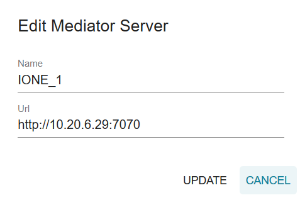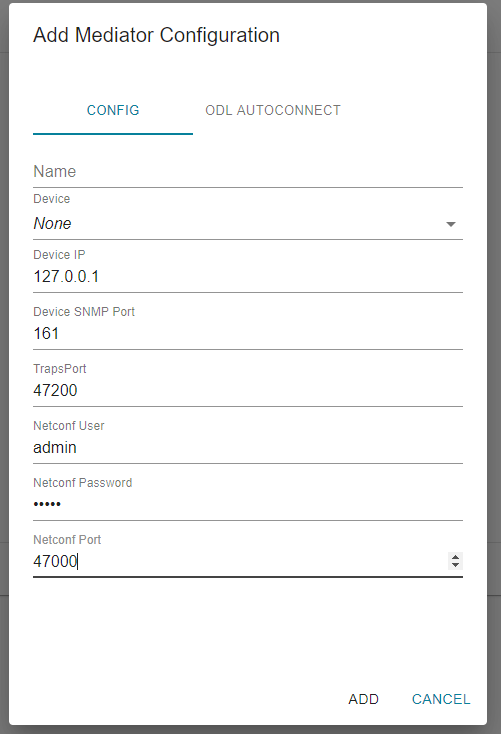User documentation
The mediator is a piece of software to translate get and set requests between the SDN-Controller and the device. In our case, we translate from netconf to snmp and back. Additionally, the mediator is listening for snmp traps to push them forward to the SDN-Controller.
The UX Mediator is the graphical user interface to manage and operate one or more mediators.
Specification
The graphical user interface should have two main views.
One main view, the 'mediator server' view showing all available mediator servers.
A detail view, the 'mediator instances' view, which should get opened upon selecting a mediator server, showing all mediator instances of the given server.
Mediator server view
The mediator server view should show all mediator servers in a table, as seen in the picture below.
The table implements the common ux-framework-table supporting sorting, filtering and pagination. Each time, a request to the server is sent.
Reload Button: Reloads/Refresh the Mediator server table
The table has the following columns:
- Name
- Url
- Actions
- Edit
- Remove
Editing a mediator server
The name and URL of a mediator server can be updated.
Adding a mediator server
A mediator server can be added via the '+' button in the right upper corner of the table.
To add a mediator server, the following mandatory input is required:
- name
- URL, which starts with http(s):
Mediator instance view
If a mediator server in the table is selected, a detail view is opened.
In the detail view, one or more configurations can be added.
The configuration has three mandatory inputs:
- in the config tab: name
- in odl autoconnect tab:
- a connect configuration
- a host name for the config
All configurations for the mediator server are displayed in a ux-framework-table.
The table has the following columns:
- Mediator
- Status
- IP Adress
- Device
- Actions
- Start
- Stop
- Info
- Delete
The Status and Device column cannot be sorted or filtered. The mediator and IP Adress columns can be sorted and filtered.
Data Provider
The mediator servers are stored in an ElasticSearch database. The REST-API is provided by the Data-Provider.
The data-provider for getting all mediator servers is read-mediator-server-list
Note: The mediator configurations are not stored in the ElasticSearch. They are loaded through the REST-API of the the mediator server.




